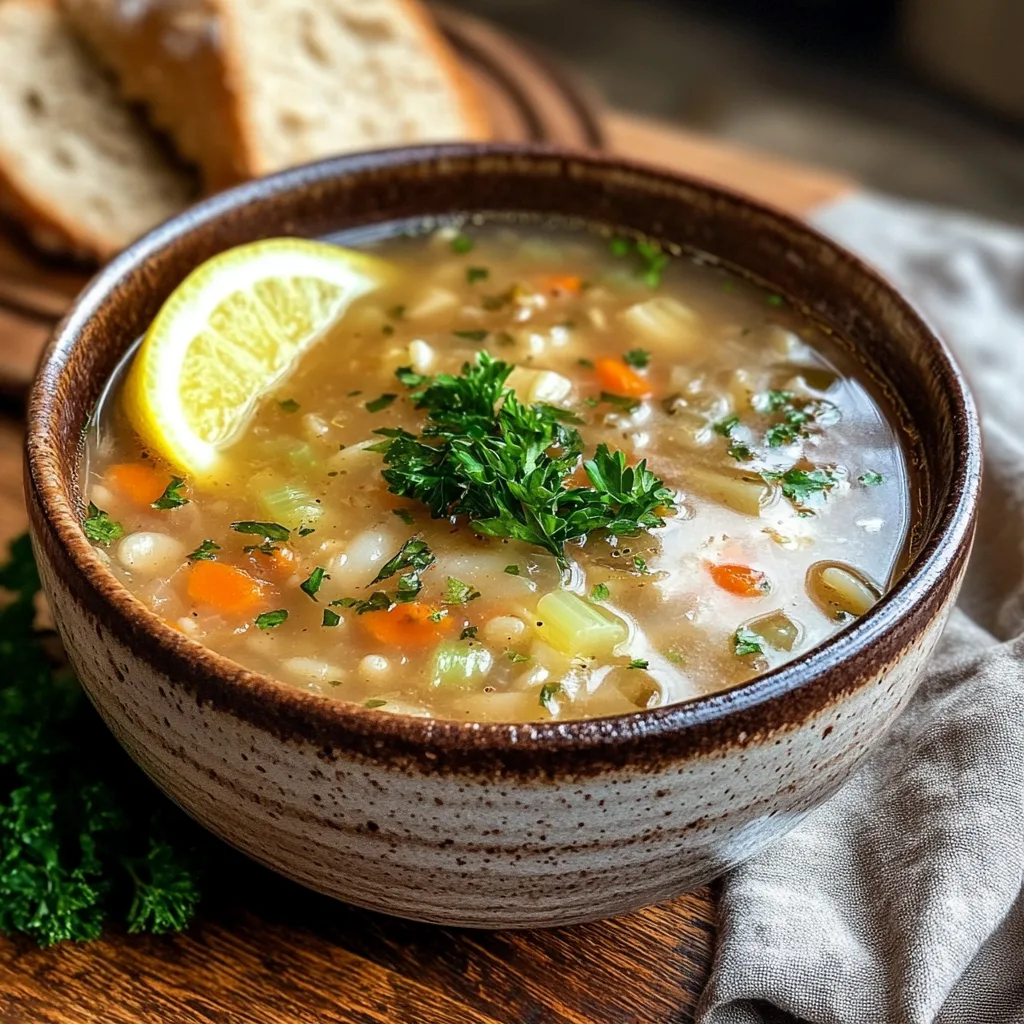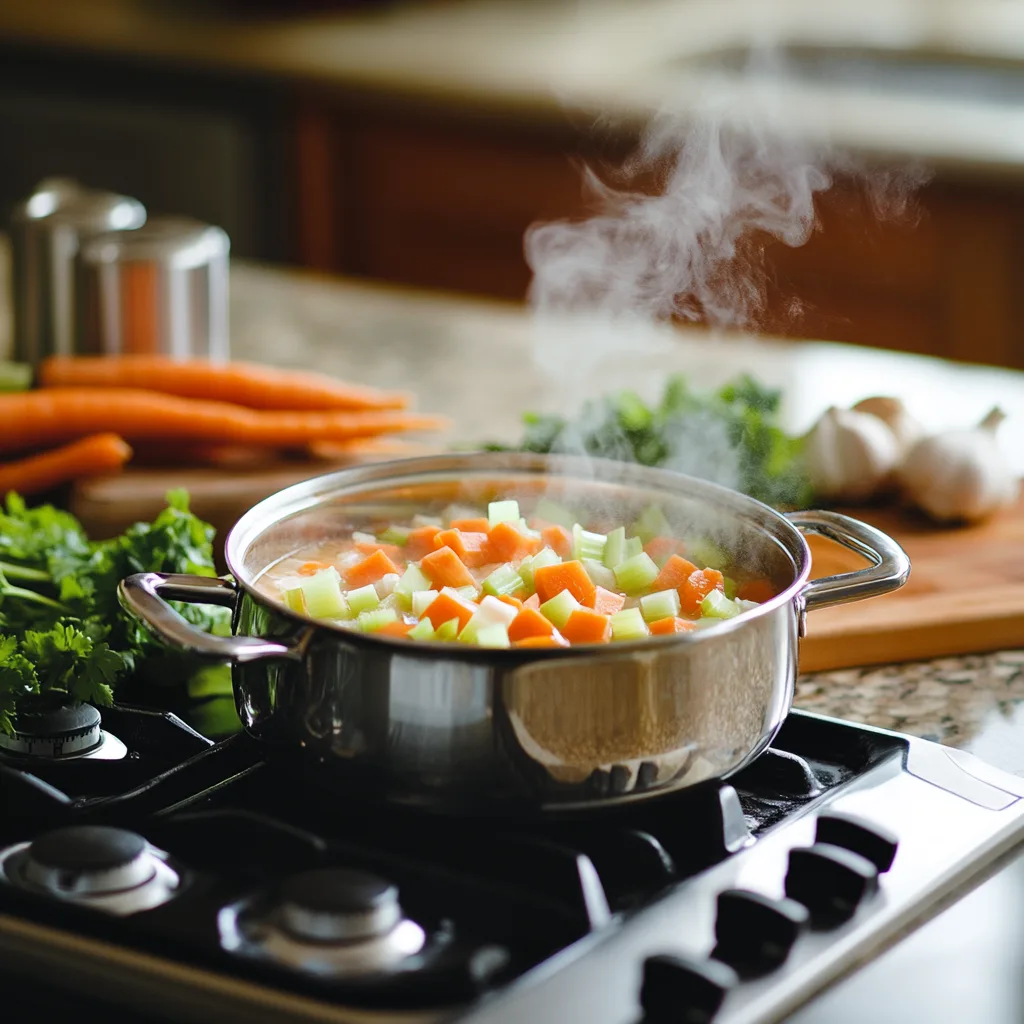When it comes to comforting dishes, few can rival penicillin soup. Known for its soothing properties and immune-boosting ingredients, this dish has been cherished for generations. Whether you’re battling a cold, nursing a sore throat, or just craving a warm, hearty meal, this soup is the perfect go-to remedy.
In this article, we’ll traverse everything about penicillin soup, from its history and ingredients to various cooking tips and health benefits. You’ll discover why it’s often called the “Italian grandmother’s cure” and how you can customize it to suit your tastes. Let’s dive into the rich, flavorful world of this age-old comfort food!
Introduction to Penicillin Soup
What is Penicillin Soup?
Penicillin soup is more than just a meal—it’s a remedy. Often referred to as “Italian penicillin,” this soup combines nourishing ingredients like chicken broth, vegetables, and tiny pasta to create a bowl that feels like a warm hug. Its roots can be traced to Italian kitchens, where generations of grandmothers, or nonnas, have sworn by its healing powers.
The star of the dish is the rich broth, simmered with wholesome vegetables and herbs. The addition of small pasta, such as pastina or orzo, gives it a uniquely tender texture that’s easy to enjoy, even when you’re under the weather.
Why is it Called ‘Penicillin’?
The nickname “penicillin” isn’t just for show. This soup has earned its reputation as a natural remedy for colds and flu. Packed with immune-boosting ingredients like garlic, onion, and lemon, it provides hydration and essential nutrients when you need them most.
The comparison to penicillin, the antibiotic, highlights its reputation for promoting recovery, though it doesn’t replace medical treatments. That said, sipping on this hot, flavorful soup can do wonders for your mood and energy levels during a bout of sickness.
With its rich history and proven benefits, penicillin soup isn’t just food—it’s a tradition worth savoring.
Ingredients for Penicillin Soup
Key Ingredients: Broth, Pasta, and Vegetables
To create a comforting bowl of penicillin soup, you’ll need a handful of simple but powerful ingredients. At the heart of this dish is a rich chicken broth, either homemade or store-bought. The broth acts as the base, infusing the soup with savory goodness and nutrients.
The next essential component is tiny pasta, often called pastina. Variants like orzo, stelline (star-shaped pasta), or pearl couscous also work well. These delicate pasta shapes soak up the flavors of the broth, making each bite incredibly satisfying.
Vegetables like carrots, celery, onions, and garlic add texture and boost the soup’s nutritional value. These veggies not only create depth in flavor but also pack in essential vitamins and minerals, making this soup a natural cold remedy.
For a touch of brightness, a squeeze of lemon juice or a sprinkle of fresh parsley at the end balances the dish beautifully.
Optional Add-ins for Flavor and Nutrition
While the classic recipe is straightforward, you can add ingredients to customize your penicillin soup. Want a creamy version? Stir in a splash of cream or a dollop of ricotta. For extra protein, toss in shredded chicken or turkey.
If you’re feeling adventurous, fresh herbs like thyme or rosemary can strengthen the flavor. A pinch of red pepper flakes adds a little heat, while Parmesan cheese lends a rich, umami taste.
Step-by-Step Recipe for Penicillin Soup
Preparing the Ingredients
Before you start cooking, make sure everything is prepped and ready. Dice the carrots, celery, and onions into small, even pieces to provide they cook evenly. Mince the garlic to release its full aroma. If you’re using chicken, shred it into bite-sized pieces.
Cook your pasta separately until it’s slightly underdone—this prevents it from becoming mushy when added to the soup.
Cooking Instructions: From Start to Finish
- Sauté the Aromatics: Begin by heating olive oil in a large pot over medium heat. Add the diced onions, carrots, and celery, and sauté until they soften and release their aroma—about 5 minutes. Add the minced garlic and cook for another minute.
- Add the Broth: Pour in the chicken broth and bring it to a gentle boil. Lower the heat to a simmer, and let the vegetables cook for 10-15 minutes until tender.
- Combine Everything: Stir in the cooked pasta and shredded chicken (if using). Season with salt, pepper, and your favorite herbs. Simmer for another 5 minutes, allowing the flavors to meld together.
- Finishing Touches: Just before serving, add a splash of lemon juice and sprinkle chopped parsley on top for a burst of freshness. If desired, grate Parmesan cheese over each bowl for added richness.
Pro Tips for Perfect Penicillin Soup
- Make it ahead: The flavors deepen as the soup sits, so it’s even better the next day.
- Use high-quality broth: Homemade broth pyramid the dish, but a good store-bought option works too.
- Keep pasta separate: Store pasta separately if you plan to refrigerate leftovers, as it absorbs the broth over time.
With these steps, you’ll have a delicious, immune-boosting penicillin soup ready to enjoy!
Variations of Penicillin Soup
Plant-Based Italian Penicillin Soup
For those who prefer a vegetarian or vegan option, penicillin soup can be made entirely plant-based. Replace the chicken broth with a hearty vegetable stock, and use plant-based pasta. Add beans or lentils for extra protein. You can also toss in mushrooms, which mimic the umami flavor of meat, making this variation just as satisfying as the original.
For a creamy finish, blend a portion of the soup and stir it back in or add a splash of coconut milk. It’s a comforting choice for anyone looking for a lighter, dairy-free version of this traditional dish.
Low-Carb and Gluten-Free Versions
Looking to cut carbs? Swap out the pasta with spiralized zucchini, cauliflower rice, or even small chunks of cooked spaghetti squash. For those needing a gluten-free option, use certified gluten-free pasta or rice noodles.
These variations still capture the essence of penicillin soup while making it accessible to a wider range of dietary needs. Plus, they’re easy to customize with your favorite low-carb vegetables or herbs.
Adding Local Flavors for a Unique Twist
Why not experiment with local flavors to make this soup your own? Add miso paste for a Japanese-inspired twist or toss in a few spices like turmeric and cumin for a warming, earthy flavor. You could also try a spicy variation by adding diced jalapeños or crushed red pepper.
For more comforting soup recipes, check out our guide to making classic chicken pot pie soup.
Health Benefits of Penicillin Soup
Immune-Boosting Ingredients
One of the reasons penicillin soup has earned its nickname is its powerhouse ingredients. Garlic and onions are rich in antioxidants and have natural antibacterial properties, while chicken broth provides essential amino acids that support the immune system. Carrots and celery add a healthy dose of vitamins, including vitamin C, which helps fight off colds and flu.
For added immunity, many recipes incorporate a squeeze of lemon juice at the end. The vitamin C from lemon not only boosts the soup’s nutritional value but also brightens its flavor, making it even more enjoyable.
Hydration and Comfort During Illness
Staying hydrated is crucial when you’re sick, and penicillin soup does just that. The broth replenishes lost fluids and electrolytes while being gentle on the stomach. Its warmth soothes sore throats and opens up congested sinuses, providing instant relief.
This soup’s light, easy-to-digest nature makes it ideal for anyone recovering from an illness or simply needing a pick-me-up. The combination of comforting flavors and nourishing ingredients makes it more than just a meal—it’s therapy in a bowl.
Serving Suggestions and Pairings
Toppings That strengthen the Flavor
The right toppings can take your penicillin soup from good to great. A sprinkle of freshly grated Parmesan cheese adds a salty, nutty flavor that blends perfectly with the savory broth. Fresh herbs like parsley or basil provide a bright, aromatic finish, while a dash of black pepper or red chili flakes can add a little spice.
For a creamy twist, add a dollop of sour cream or a swirl of heavy cream just before serving. If you love crunch, toasted croutons or crispy bacon bits are fantastic choices to complement the soup’s soft, tender texture.
These toppings not only strengthen the flavor but also allow everyone to customize their bowl, making the meal even more enjoyable.
Perfect Side Dishes for Penicillin Soup
While penicillin soup is hearty enough to stand alone, pairing it with the right side dishes can make the meal feel more complete. A slice of crusty bread, such as a baguette or sourdough, is perfect for dipping into the flavorful broth.
For something lighter, a simple green salad with a tangy vinaigrette balances the richness of the soup. If you’re craving comfort food, a grilled cheese sandwich or garlic bread makes an excellent pairing. These combinations provide a satisfying and well-rounded meal.
FAQs Section
Can I Freeze Penicillin Soup?
Yes, you can freeze penicillin soup! This makes it a convenient option for meal prep or whenever you need a quick and comforting dish. To freeze, let the soup cool completely before transferring it to airtight containers or freezer bags.
For best results, avoid adding pasta before freezing, as it can become mushy when reheated. Instead, cook fresh pasta and add it to the soup when you’re ready to serve. Reheat the soup on the stovetop over medium heat, stirring occasionally, until it’s warmed through.
What’s the Best Pasta to Use in Penicillin Soup?
Tiny pasta shapes like pastina, orzo, and stelline are classic choices for penicillin soup. These small shapes cook quickly and absorb the flavors of the broth, making each bite delightful. However, if you can’t find these, pearl couscous or broken spaghetti are great alternatives.
How Long Does It Take to Cook Penicillin Soup?
Cooking penicillin soup is relatively quick and straightforward. From start to finish, it usually takes about 30–40 minutes. This includes prepping the vegetables, sautéing the aromatics, simmering the broth, and cooking the pasta. For even faster prep, consider using pre-cut vegetables or a pressure cooker.


